Architect and humanitarian, Yasmeen Lari, was seeking funding to build a million bamboo homes for around $100 apiece, after Pakistan suffered its worst-ever floods. Now she’s shifted her plan, deciding she’d still aim for that, but with a new price tag to outside funders: $0. “I really believe that everyone wants to have a better life. But they don’t see how they can achieve it,” Lari says. “We put faith in them. We said, ‘Look, you’ve got to do it yourself.’”
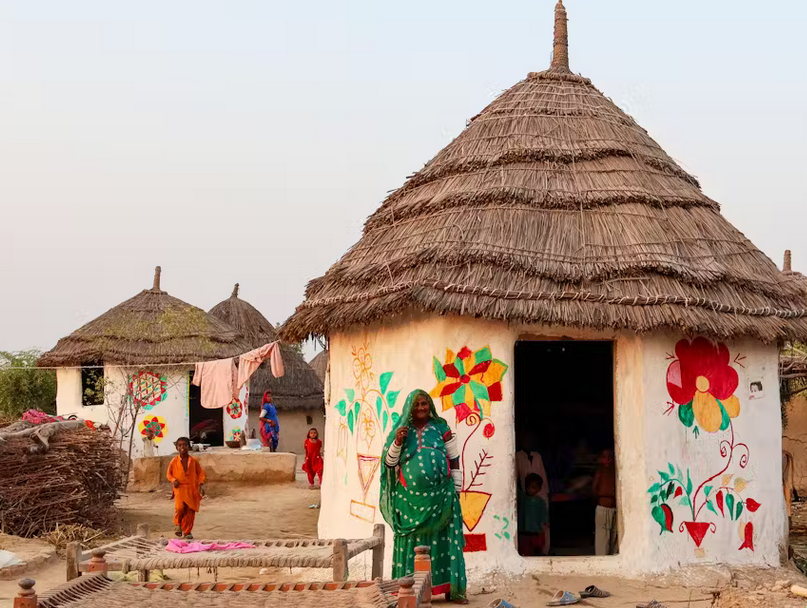 Lari, now 83, pivoted in the 2000s from designing hulking concrete landmarks for business magnates to building low-cost, zero-carbon relief homes in disaster zones. She began using bamboo after discovering its remarkable resilience to earthquakes and floods. Since the 2022 floods, Lari and the Heritage Foundation of Pakistan, which she founded with her husband to preserve historic structures, have built 50,000 shelters in flood-affected communities.
Lari, now 83, pivoted in the 2000s from designing hulking concrete landmarks for business magnates to building low-cost, zero-carbon relief homes in disaster zones. She began using bamboo after discovering its remarkable resilience to earthquakes and floods. Since the 2022 floods, Lari and the Heritage Foundation of Pakistan, which she founded with her husband to preserve historic structures, have built 50,000 shelters in flood-affected communities.
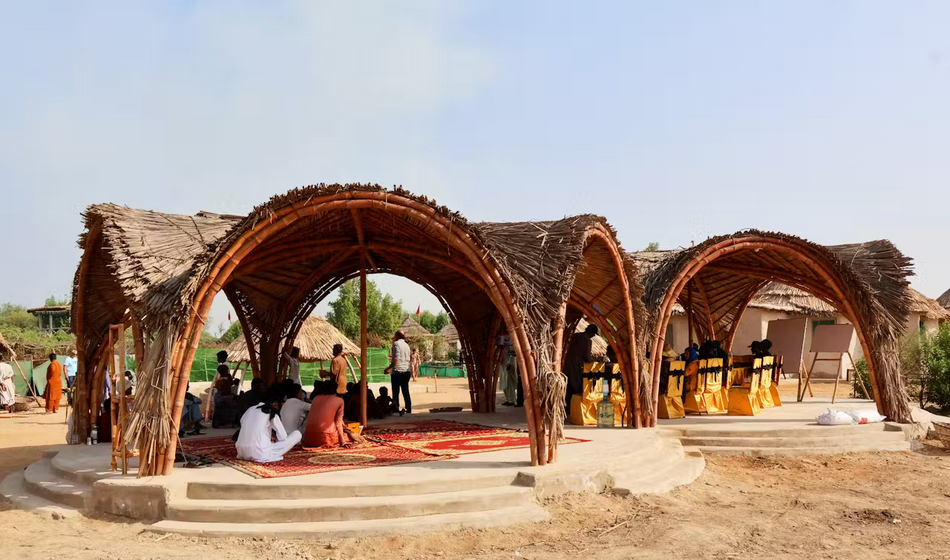 Now, she believes she can replace the need for outside funding by essentially designing a model for communities to do it themselves. If enough people gain the knowledge to build affordable, sustainable housing and infrastructure, while also creating financial opportunities through selling vegetables or terra-cotta tiles, she posits they can make a living teaching others to do the same. She has crafted a plan for villages to first achieve food security, then progress to access to clean water and education, flood-proof bamboo homes, and finally, a fully humming microeconomy.
Now, she believes she can replace the need for outside funding by essentially designing a model for communities to do it themselves. If enough people gain the knowledge to build affordable, sustainable housing and infrastructure, while also creating financial opportunities through selling vegetables or terra-cotta tiles, she posits they can make a living teaching others to do the same. She has crafted a plan for villages to first achieve food security, then progress to access to clean water and education, flood-proof bamboo homes, and finally, a fully humming microeconomy.
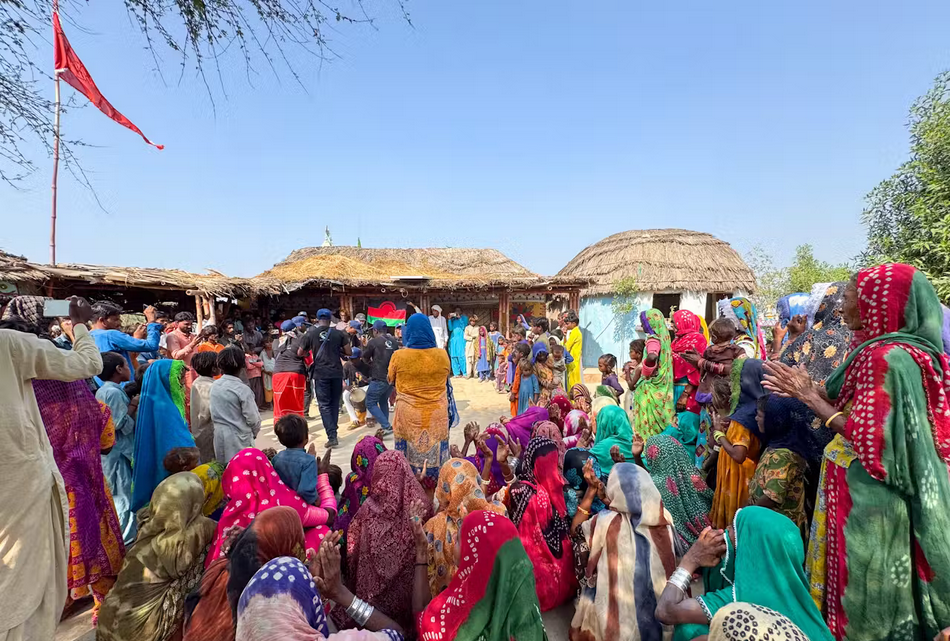 Wealth inequality in Pakistan is extreme, and nowhere more so than in the floodplains where peasant communities live as feudal subjects to powerful landowners whose land they till. Many tell stories of how, when the floods hit, water was diverted from profitable farmland and into the poorest communities. People gathered for weeks on roadsides, the only places that weren’t flooded.
Wealth inequality in Pakistan is extreme, and nowhere more so than in the floodplains where peasant communities live as feudal subjects to powerful landowners whose land they till. Many tell stories of how, when the floods hit, water was diverted from profitable farmland and into the poorest communities. People gathered for weeks on roadsides, the only places that weren’t flooded.
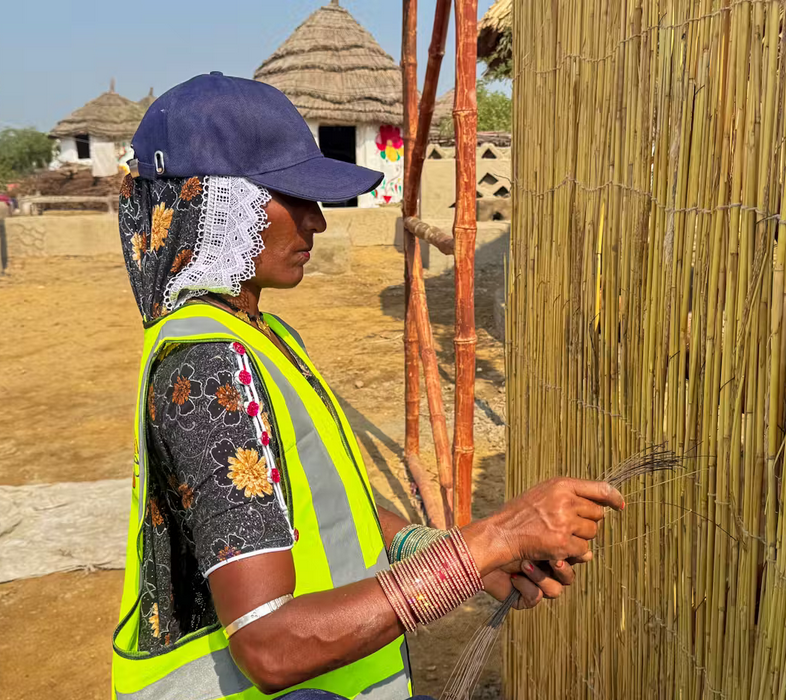 “Suddenly, everything was washed away,” Lari says. “There’s just nothing left, no fields, no greenery, no nothing. These people never had anything much in their lives, but whatever it was, it was all gone.”
“Suddenly, everything was washed away,” Lari says. “There’s just nothing left, no fields, no greenery, no nothing. These people never had anything much in their lives, but whatever it was, it was all gone.”
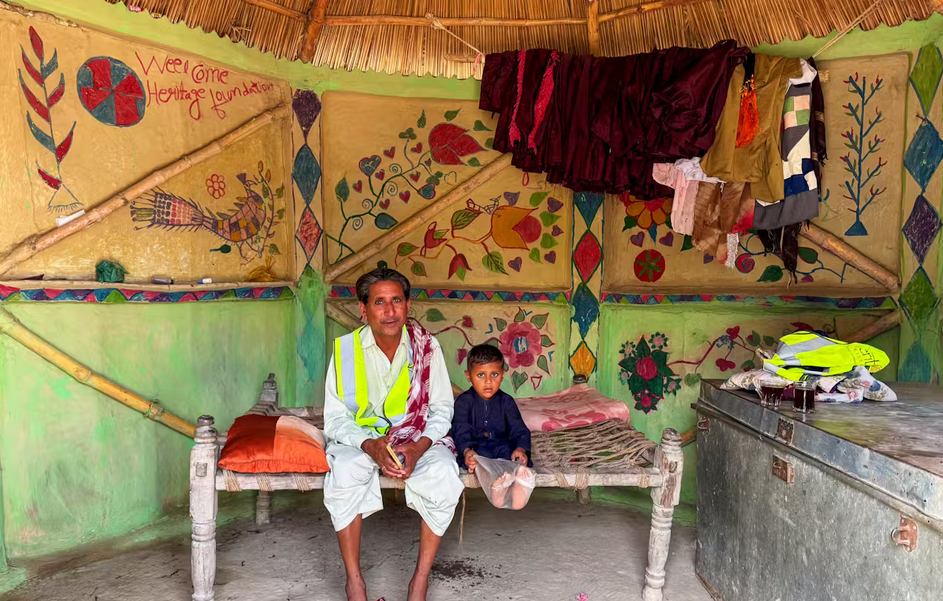 Lari’s design is built on a large platform of sun-dried mud bricks and fortified with limestone, keeping food elevated from the ground and free of contamination. When a fire is lit, smoke is emitted through a high chimney, preventing inhalation, and its raised platform also serves as a gathering space during floods.
Lari’s design is built on a large platform of sun-dried mud bricks and fortified with limestone, keeping food elevated from the ground and free of contamination. When a fire is lit, smoke is emitted through a high chimney, preventing inhalation, and its raised platform also serves as a gathering space during floods.
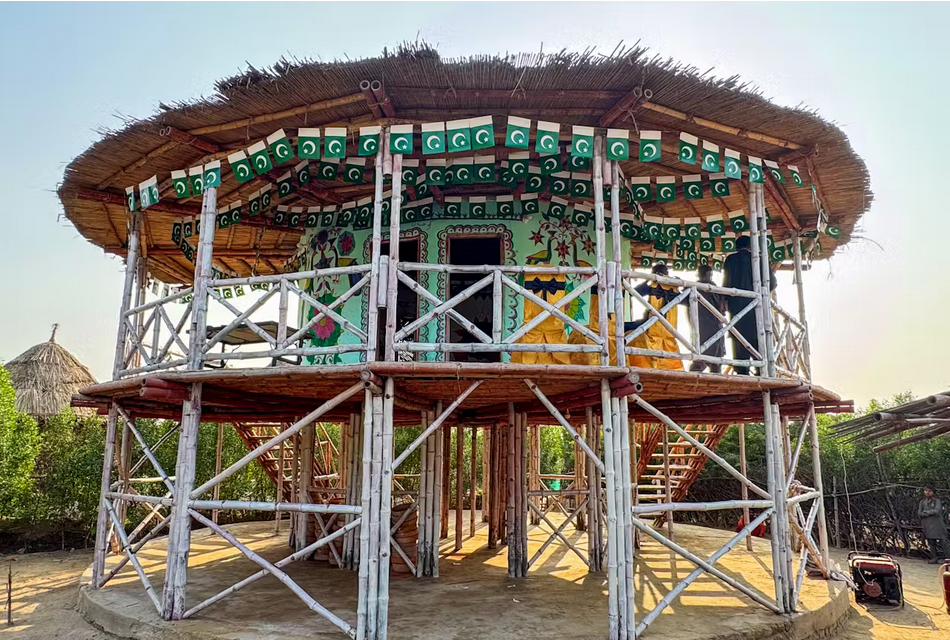 Lari says the Heritage Foundation of Pakistan has built 800,000 chulahs for families in Pakistan since 2018. “I just wanted them to be safe and have a little dignity,” she explains. But their unexpected benefits quickly revealed themselves. They give people a place to “sit comfortably without any kind of insects and filth around them,” and their large platforms serve as natural communal spaces.
Lari says the Heritage Foundation of Pakistan has built 800,000 chulahs for families in Pakistan since 2018. “I just wanted them to be safe and have a little dignity,” she explains. But their unexpected benefits quickly revealed themselves. They give people a place to “sit comfortably without any kind of insects and filth around them,” and their large platforms serve as natural communal spaces.
Some schoolhouses are slightly larger versions of the bamboo homes themselves, constructed with bamboo frames covered with lime plaster. Lari’s eight-sided bamboo shelters can famously be built for less than $100 apiece, relying on prefabricated frames with diagonal reinforcements that also provide resistance to earthquakes. These panels can also be moved and reused if floods destroy the exterior plastering and the roof, made of thatched leaves bound tightly to prevent water intrusion while also allowing hot air to escape.
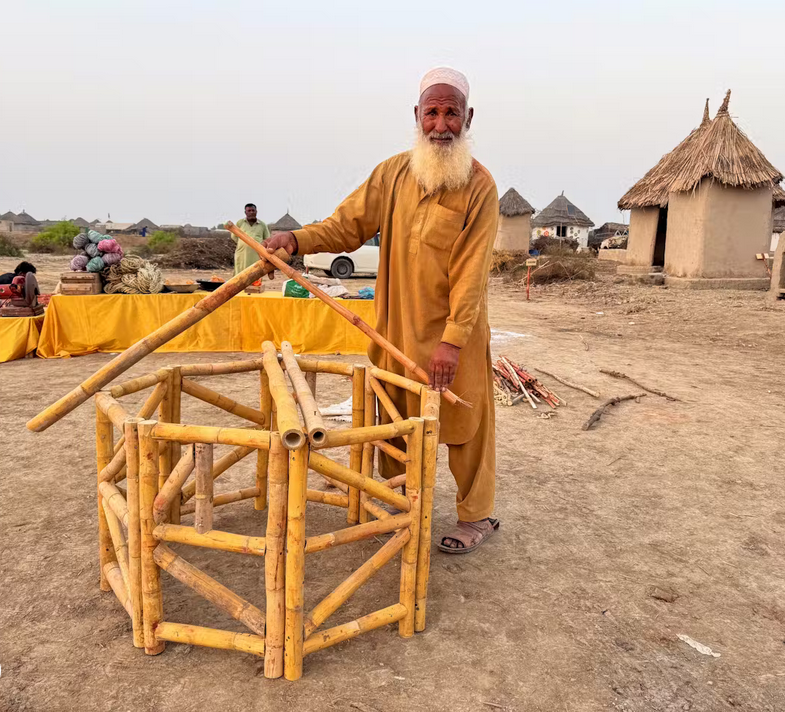 The Heritage Foundation trains people to build homes, chulahs, toilets, and other essential structures in their own villages, along with skills like thatching roofs and crafting terra-cotta tiles. Then, people who learn the skills can join “barefoot brigades,” which travel and teach other communities. As they earn more money, they eventually buy motorcycles and travel even further.
The Heritage Foundation trains people to build homes, chulahs, toilets, and other essential structures in their own villages, along with skills like thatching roofs and crafting terra-cotta tiles. Then, people who learn the skills can join “barefoot brigades,” which travel and teach other communities. As they earn more money, they eventually buy motorcycles and travel even further.
It’s an entire microeconomy: Villages are saving what they earn, receiving no donations, and locally sourcing almost everything. People take pride in the elaborate, colorful designs of their chulahs and homes; when I visited, women were decorating using lime plaster and paint made from rocks. It’s easy to notice the wondrous quality of their designs, the first step into a world of possibility. “They’re creating a dreamworld,” Lari says.
 Adjacent to the central chulah is a series of bamboo homes built specifically for visitors equipped with private bathrooms, light and power fixtures, and seated compost toilets, along with a large, sweeping bamboo pavilion, where they eat under the shade.
Adjacent to the central chulah is a series of bamboo homes built specifically for visitors equipped with private bathrooms, light and power fixtures, and seated compost toilets, along with a large, sweeping bamboo pavilion, where they eat under the shade.
Lari says, “People have tremendous potential, and also poverty has tremendous potential. That’s why money is important, but not that important. A little bit of funding will help them. But even if they don’t receive aid, it just means building takes longer.”
You can read the original article at www.dwell.com
